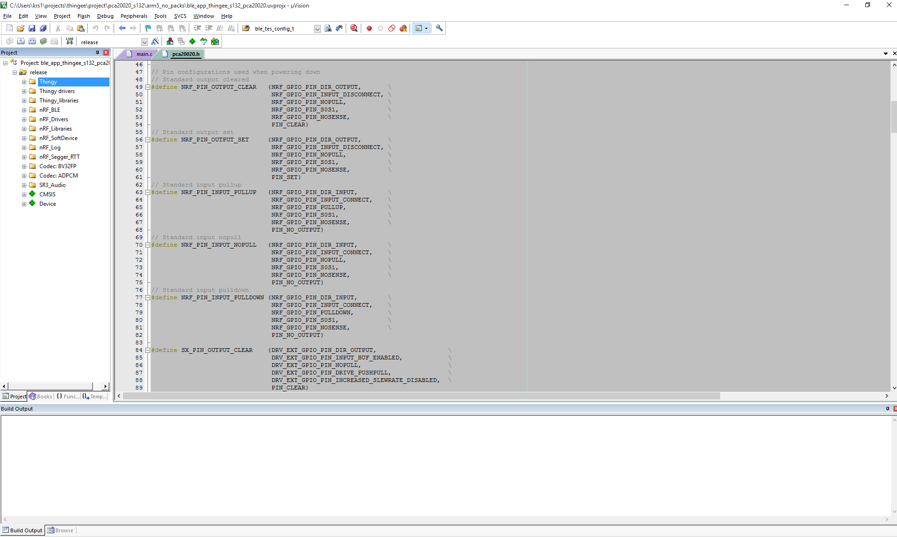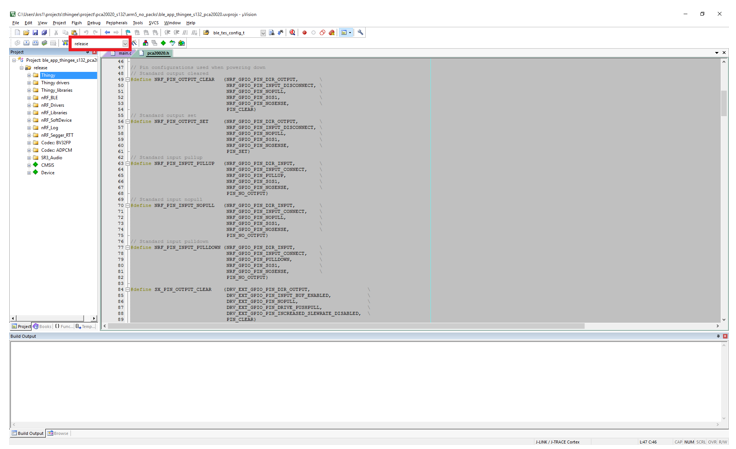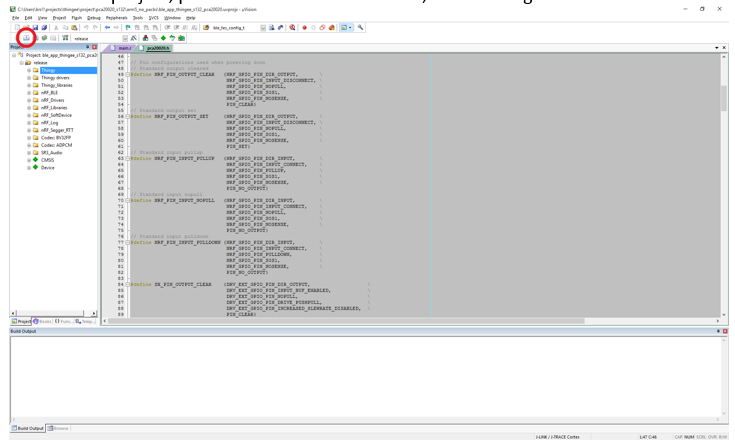You must compile the Thingy firmware using either GCC or Keil μVision.
Compiling with Keil
Before starting this procedure, make sure you have Keil installed on your computer.
Follow these steps to compile the Thingy firmware using Keil:
- Navigate to the folder
\project\pca20020_s132\arm5_no_packs\ and double-click the project file ble_app_thingy_s132_pca20020.uvprojx. The μVision integrated development environment (IDE) opens.

Keil μVision IDE
- If you are compiling for the newest version of the Thingy hardware, select release from the target drop-down menu, as shown in the figure.

Select <b>release</b> from the menu
- Select the appropriate Thingy version from the list. To check the version of your Thingy, you must remove the top rubber cover. The version number can be found on a white label on the PCB. To compile a debug version, select debug.
- To build the project, press F7 or click Build. The output will be visible in the Build Output window at the bottom and should finish with "0 Errors, 0 Warnings". If you are compiling for an older Thingy version, you will receive a warning stating the version that you are compiling for.

Building the project
Compiling with GCC
Before starting this procedure, make sure you have the following components installed on your computer:
- GNU toolchain for ARM Cortex-M
- GNU make or CMake
Follow these steps to compile the Thingy firmware using GCC:
- Set up the path in
makefile.windows or makefile.posix, depending on the platform that you are using. The .posix file is used when working on either Linux or OS X.
- Open the makefile in a text editor.
- Make sure that the
GNU_INSTALL_ROOT variable points to your GNU Tools for ARM Embedded Processors directory. For example: GNU_INSTALL_ROOT := $(PROGFILES)/GNU Tools ARM Embedded/4.9 2015q3
GNU_VERSION := 4.9.3
GNU_PREFIX := arm-none-eabi
- Navigate to the folder
project\pca20020_s132\armgcc.
- Run the following command to compile the Thingy application code:




